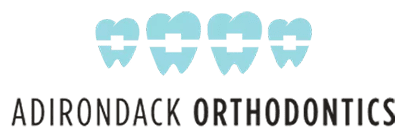Orthodontic FAQ: Your Questions Answered
Smile bright and discover everything you need to know about orthodontic treatment
If you’re struggling with teeth that aren’t as straight and healthy as you want, you probably have a few questions about how to achieve the perfect smile. At Adirondack Orthodontics, we’ve taken care of countless patients who have been in similar situations, so we have the answers you’re seeking!
See the answers to some commonly asked questions below.
What is a good age to get braces or Invisalign? What is the average age to get braces?
Most children are typically accessed for orthodontic treatment by age 7. However, there’s no “right” age to get braces or Invisalign – kids, teens, and adults all can benefit from a straight, healthy smile!
How do I pay for treatment?
We make paying for treatment as easy as possible! We are in network with most major insurers and have already negotiated treatment fees with them. Additionally, we make treatment more accessible by helping you maximize your dental benefits with things like FSA/HSA plans. We also offer numerous discounts.
Do I have to pay in full when I start treatment?
Not at all! While you can pay in full at the start, you are also welcome to make smaller payments as treatment goes on at a pace that works with your budget. Quarterly, monthly, annual, or semi-annual payment options are available.
Do you guarantee results?
Yes! We have what we call our “smile guarantee”: your smile is guaranteed for life once you complete treatment with us! If you see your teeth have shifted over the years, contact us. You’ll never pay full price for orthodontic treatment at our practice again.
What can I expect during my first visit?
We’ll provide you with a free exam, X-rays, and photos as needed. We’ll also answer any questions you have, recommend a treatment plan, and discuss a payment plan that works with your budget. Just be sure to provide us with all the information we need to give you the best possible experience during your appointment!
Will I have to wear a retainer after treatment?
Once treatment is complete, we recommend wearing a retainer at night to keep your teeth in place. Fortunately, we offer a Smile Protection Program to help you safeguard your smile for the rest of your life.
How long will my orthodontic treatment take?
Treatment length depends on a variety of factors, and everyone’s orthodontic journey is different. However, we can help most patients achieve their best smiles in one year or less. We also offer Express Aligner Treatment for certain patients. The best way to see how long treatment will take is to schedule a free consultation at one of our six locations.
What if I have more questions?
If you have any more questions or you would like to schedule your first free appointment, please contact us today! With convenient locations in Albany, Clifton Park, Latham, East Greenbush, Glens Falls, and Schenectady, Adirondack Orthodontics is your trusted orthodontic clinic in New York.
We look forward to helping you start your journey toward the perfect smile!







